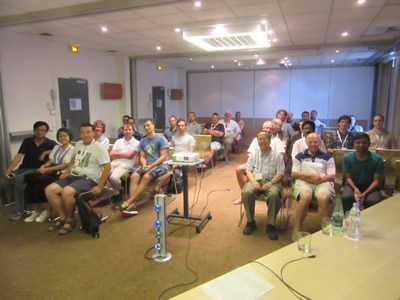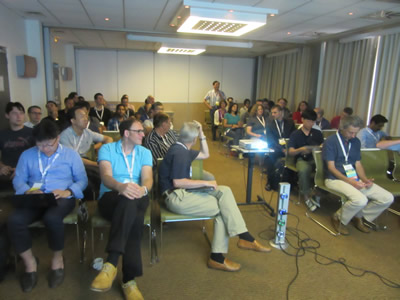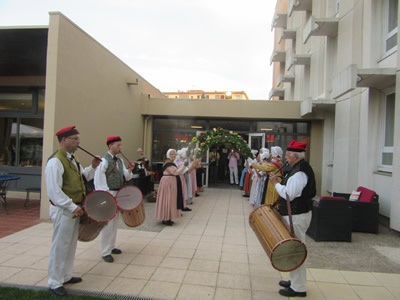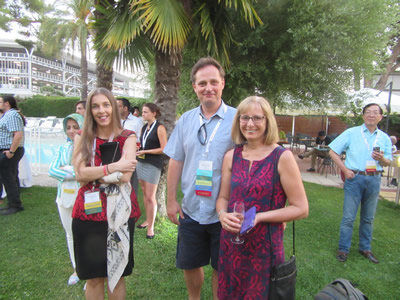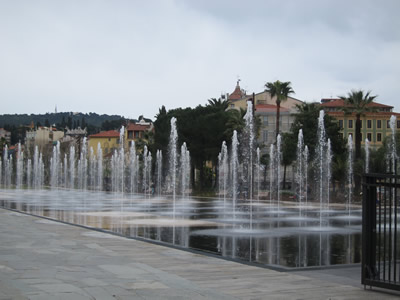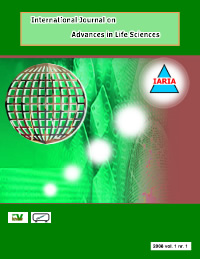The Ninth International Conference on Bioenvironment, Biodiversity and Renewable Energies
BIONATURE 2018
May 20, 2018 to May 24, 2018 - Nice, France
Deadlines
Submission | Feb 07, 2018 |
Notification | Mar 11, 2018 |
Registration | Mar 24, 2018 |
Camera ready | Apr 03, 2018 |
Deadlines differ for special tracks. Please consult the conference home page for special tracks Call for Papers (if any).
BIONATURE 2018 - The Ninth International Conference on Bioenvironment, Biodiversity and Renewable Energies
May 20, 2018 - May 24, 2018
BIONATURE 2018
ISSN: 2308-4154
ISBN: 978-1-61208-640-8
BIONATURE 2018 is colocated with the following events as part of BioSciencesWorld 2018 Congress:
- BIOTECHNO 2018, The Tenth International Conference on Bioinformatics, Biocomputational Systems and Biotechnologies
- BIONATURE 2018, The Ninth International Conference on Bioenvironment, Biodiversity and Renewable Energies
Selected authors of presented articles will be invited to submit extended versions to the following journals:
- IARIA journals | Library of Congress of USA | Submitted to ISI Thomson | free submission | open access |
- MDPI Bioengineering Journal | BIOSIS, PubMed | publication fees | open access
BIONATURE 2018 conference tracks:
A. Bioenvironment (climate, global warming, hydrology, wind science, pollution, economics)
- Climate (Climate change; Global warming; Greenhouse gases; Deforestation; Bio-safety and occupational health, sea level rise, climate adaptation);Global temperature assessment; Ocean acidification; Climate indicators
- Hydrology (Global water cycle; Stream flow and river discharge; River runoff; Wetland hydrology; Lakes and Reservoirs; Precipitations; Snow; Flood; Drought; Hydropower; Waterways; Water infrastructures; Water management; Glacier melting; Soil moisture; Evapotranspiration; Groundwater; Water resources; Water quality; Extreme hydrology)
- Wind science (wind streams; wind-driven seed invasion; wind forecasts; tornados; in-land and off-shore winds, soil moisture, hurricanes)
- Cryosphere (Arctic sea ice reduction and environmental impacts, Antarctic sea ice change, contrast between Arctic and Antarctic sea ice behaviors, sea ice classification, sea ice thickness and dynamic trajectories, sea ice forecast and prediction, ice sheet mass balance, permafrost, snow cover, lake and river ice, atmospheric chemistry)
- Public health (Pollution; Acid rains; Pollution impact (light, air, drinking water, earth, respiratory health, planetary oceans); Pollution factors (toxins, chemical, nuclear, garbage, noise); Carbon dioxide pollution; Biological pollution (invasion); Pollution prevention, control and engineering); Natural and man-made disasters
- Economics (Ecological economics; Bio-agriculture; Environmental impacts of aquaculture; Bio-industry, Urban change, Mega urban, Population dynamics, Rural-urban transformation)
- Responsibility (Social responsibility; Corporate responsibilities; Government responsibilities, Carbon footprint, Oil spill, Global mercury treaty)
B. Biodiversity and invasion control (marine, oceanic, Arctic(Antarctic, forests, bioinvasion)
- Marine & oceanic bio-technologies (Marine science; Microbiology am marine eco-systems; Measuring impact of organic pollutants; Marine-derived drugs; Drug discovery sand marine -derived compounds; Cosmetics; Nutritional Supplements; Artificial bones; Glues for mussels; Heat resistant enzymes)
- Oceanic bio-diversity (Coastal health; Measurement and predictions; Environmental change predictions; Reef and marine ecosystems; Microscopic plankton; Diagnostic and therapeutic agents; Bio-mineralization and nano-technologies; Aquaculture; Algology, Ocean acidification)
- Arctic and Antarctic bio-pulse (Resource exploitation and large-scale eco- perturbations; Under-ice ecosystems; Adaptation and survival strategies; Food-chain dependence survival; Aeronomy; Monitoring ozone holes; Polar stratospheric clouds; Glaceology; Loss of ice modeling; Ice shelves’ move prediction; Wildlife and endurance in cold eco-systems, Bromine explosion, Mercury deposition)
- Forest landscape (Monitoring landscape changes; Methods and tools to assess and manage changes; Conservation criteria; Restoration planning; Patterns and processes in changing landscapes; Scaling in landscape analysis; Disruptions in landscape changes; Biodiversity conservation during landscape planning and changing; Management and sustainability of changing landscapes, Wildland-urban interface, Wetland change, Land cover/land use, Wildfire)
- Bioinvasion (Detection and warning systems; Control and sustainable management; Risk assessment; Invasive species; Ecological adaptation; Fragmentation and scale effect; Biological invasions and climate change; International conventions on biological invasions; Public awareness and education)
C. Renewable and Sustainable Energies
- Energy sustainability (Big consumers; Small consumers; Active consumers; Passive consumers; Energy-intensive technologies; Energy-intensive devices; Energy-intensive services and applications; Energy-intensive mission-critical applications; Energy-intensive safety applications; Home appliance consumption; Smart grid solutions; Telecommunications energy efficient solutions; Energy control and optimization in data centers; Interfaces for energy interchange; Alternative energy sources)
- Energy bioscience (Bioenergy, biopower, biofuels; Bioprocessing solutions; Physical biosciences; Photosynthetic systems; Energy transduction systems; Ultrasonic technologies; Geothermal energy; Ocean thermal energy; Ocean waves energy; Ocean tides energy; Vibration based, piezoelectric, and nanogenerators; Body pulse; Hybrid energy)
- Eolian Energy (Wind energy turbines; Wind farms; Eolian production systems; Storage for eolian energy; Integration between eolian systems and classical energy systems; Independent and corporate producers; Feed-in tariffs)
- Photovoltaic solar energy (Solar energy; Solar collector; Collector systems; Solar energy utilization; Solar Photochemistry; Energetic potential; Storage for eolian energy)
- Biomass energy (Plant and non-medical microbial systems; Thermo-chemical conversion of biomass fuels; Feedstock development (switchgrass, miscanthus, etc.); Biomass depolymerization; Biofuels production; Fossil fuel bioprocessing; Cleaner energy from renewable plant materials; Ethanol plants and bio-refineries)
- Green energy technologies and economic models (Chemistry and nanotechnology to improve biodiesel production; Potential of mitigation of atmospheric change through the development of herbaceous energy crop; Development of accessible mechanistic mathematical models; Environmental effects on photosynthesis to plant productivity; Social acceptability of energy crops; Legislation and standards; Economic, environmental, and social challenges for renewable energy)
Deadlines:
Submission | Feb 07, 2018 |
Notification | Mar 11, 2018 |
Registration | Mar 24, 2018 |
Camera ready | Apr 03, 2018 |
Deadlines differ for special tracks. Please consult the conference home page for special tracks Call for Papers (if any).
Technical Co-Sponsors and Logistic Supporters







